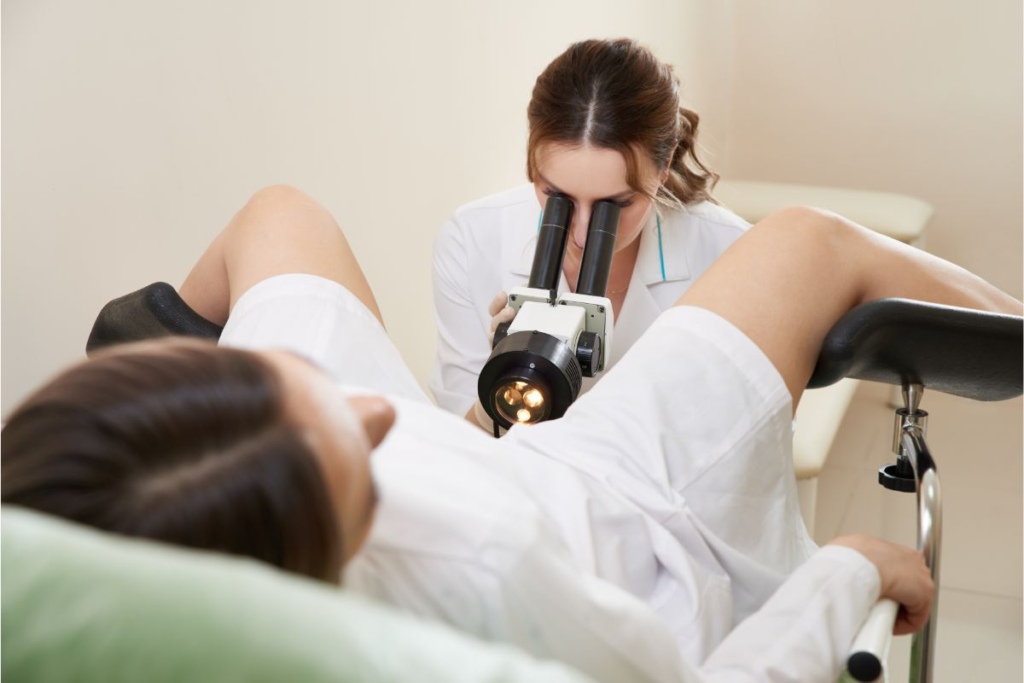Vaginismus is a condition that affects many different women from all walks of life. It is a condition that can have a notable impact on their quality of life, characterized by involuntary muscle contractions that can make vaginal penetration painful or impossible. Vaginismus affects around 2 in every 1,000 people, and medical professionals believe as many as 1 in 2 people with vaginas will experience vaginismus at some point in their lifetimes. However, due to the shame and stigma attached to the condition and the lack of conversation around it, many will suffer in silence, although there are treatment options available.

These different treatments include therapy, dilators, or medication. In some cases surgery may be a necessary intervention. Surgery sounds scary and may not be necessary, so it is important to note right away that vaginismus surgery is the very last resort in the treatment of vaginismus. To make sure you are best informed when discussing this option with your healthcare provider, this article aims to prvide more information on what exactly vaginismus surgery is, who might need it, and what can you expect from this type of procedure.
What Is Vaginismus?
Before we take a closer look at vaginismus surgery, let’s make sure we understand exactly what vaginismus is. In short, vaginismus is a condition that affects women and is characterized by involuntary muscle contractions that make vaginal penetration painful or impossible. These muscle contractions occur in the pelvic floor muscles, which are the muscles that support the bladder, uterus, and rectum.
Vaginismus can occur for many different reasons. Some of these include anxiety, trauma, fear, or underlying medical conditions like endometriosis. It can also be caused by certain medications, infections, or hormonal imbalances.
Vaginismus can be a challenging and frustrating condition to deal with, often causing significant impacts on a person’s quality of life. It can lead to pain during sexual intercourse, difficulty when inserting tampons, or even difficulty with pelvic exams.
What Is Vaginismus Surgery?
As discussed earlier one of the remedies for vaginismus is surgical intervention. Vaginismus surgery is a procedure that has been designed to treat the condition by addressing the physical aspect of muscle contractions in the vagina. The surgery involves dividing or cutting the muscles inside the vaginal wall, allowing for more relaxed movement. Vaginismus surgery is often considered a last resort treatment for the condition, as there are many less intrusive treatments that are to be considered first.
There are two different types of vaginismus surgery: hymenotomy and vestibulectomy.
Firstly, hymenotomy is a process that involves making an incision in the hymen – the thin membrane that covers the vaginal opening – to relieve pressure and allow for easier movement.
Secondly, vestibulectomy involves removing the sensitive tissue located in the vestibule – the area around the vaginal opening – to decrease pain and discomfort.
As mentioned it is worth stating again that vaginismus surgery is often seen as the final treatment, and as a result, is only usually recommended for the most severe cases. Whether or not you should be considering vaginismus surgery will be decided by your doctor, and usually only after other treatments have been attempted.
Who Might Need Vaginismus Surgery?

There are a few different scenarios in which vaginismus surgery might be needed, but for almost every scenario it should be considered a last course of treatment.
In this section, we’re going to give you some examples of people who might need vaginismus surgery
- Women With Severe Vaginismus: For some people, vaginismus can be so severe that none of the other treatments (botox injections, dilator therapy) work, so they need instant help. In these cases, surgery is a way that the tight muscles can be released and the person’s quality of life can increase.
- Women With Anatomical Abnormalities: Sometimes vaginismus can be caused by specific anatomical abnormalities. These include a septum, a hymen that does not fully open, or scar tissue that can come from a variety of scenarios. These issues can be corrected by vaginismus surgery to alleviate the issues associated with them.
- Transgender Women: Vaginismus surgery can sometimes be a necessary treatment for transgender women who are undergoing gender confirmation surgery. This process can help to ensure that the neovagina is able to accommodate penetration without pain.
- Women With Pelvic Floor Disorders: Pelvic floor disorders like pelvic organ prolapse, or urinary incontinence can cause vaginismus as a secondary symptom. For people who suffer from this issue, surgery can be a way to correct any underlying pelvic floor disorders and ultimately alleviate vaginismus symptoms.
- People With Psychological Issues Around Sex: This can be caused by a huge variety of different issues around sexual trauma or lack of sexual education. All of these can result in a person developing vaginismus. Sometimes surgery is the final treatment for people who suffer from the condition for this reason.
- Women With Dyspareunia: Dyspareunia is a condition that means women have constant pain around penetrative sex. There seems to be a link between dyspareunia and vaginismus, as many patients experience both of these at the same time.
What To Expect From Vaginismus Surgery?
Although the concept of surgery may be intimidating, you should know that many patients report feeling improved symptoms and relief following this procedure.
It allows many people to engage in pain-free sex after a few weeks of aftercare and recovery. With this in mind, it is important to note that this treatment often goes hand-in-hand with others. For example, vaginismus surgery is usually accompanied with vaginal dilator therapy.
This means that after surgery, many people will need to continue to use vaginal dilators. These devices help your pelvic floor muscles and other parts of the vagina to relax and expand with each session.
You should note that vaginismus surgery will usually provide instant relief for up to 3 months. During this time, patients are encouraged to maintain their vaginal dilator therapy until they can engage in sex without pain, and will eventually stop needing treatment.
Final Thoughts
In conclusion, vaginismus can be a frustrating and painful condition that requires treatment from health care professionals. One of the most severe forms of treatment is vaginismus surgery. It is important to consider less intrusive treatments before surgery, as the other treatments do cure this condition in some women.
However, surgery is a vital option for individuals who have not yet responded well to other treatments, as well as patients who have specific physical abnormalities that contribute to their condition. We hope that this article has told you everything you wanted to know about vaginismus surgery and that you’re now more confident about how it works, and who might need it.
If you still have some questions, check out our short Frequently Asked Questions section below for some answers! Either way we recommend that you check with your healthcare provider whether or not you should consider surgery. As mentioned surgery is the last resort and the decision for or against it should be discussed with a medical professional.
Frequently Asked Questions
Can Psychological Factors Influence Vaginismus?
It appears that there are many different causes for Vaginismus, and one of these can be psychological factors. Past trauma, fear of pain, and general anxiety can all affect a person and cause them to suffer from this condition.
Can Vaginismus Be Cured?
“Cured,” is a loaded term, but you should know that vaginismus can be treated to a point where it will no longer interrupt a person’s life. This is generally done through a series of different treatments including vaginal dilation therapy and in severe cases, surgery.
Does Vaginismus Affect Fertility?
There is no direct connection between vaginismus and a person’s fertility, however, it can make it painful or impossible for an individual to have penetrative sex, which can in turn affect an individual’s ability to conceive.
It should be noted that penetrative sex is only one way of many that a person can use – for example in vitro fertilization – to conceive if penetrative sex is not an appropriate option.
Does Vaginismus Ever Go Away On Its Own?
This can happen, provided that vaginismus has been caused by psychological factors. If a person is able to treat their anxiety, or underlying issues revolving around sexual trauma, then there is a chance that symptoms can be reduced.
However, many people are unable to manage their symptoms on their own, which causes them to look for other remedies such as dilation therapy or surgery.
Where Can I Go To Seek Help If I Suffer From This Condition?
If you believe you are experiencing the symptoms of vaginismus, then it’s important that you seek help from a qualified healthcare provider. This person will be able to help diagnose you with it as a medical issue and identify the underlying causes of it.
From here, they will be able to recommend suitable treatment, which may not be as severe as surgery, and include counseling, self-help techniques, pelvic floor therapy, and others.



